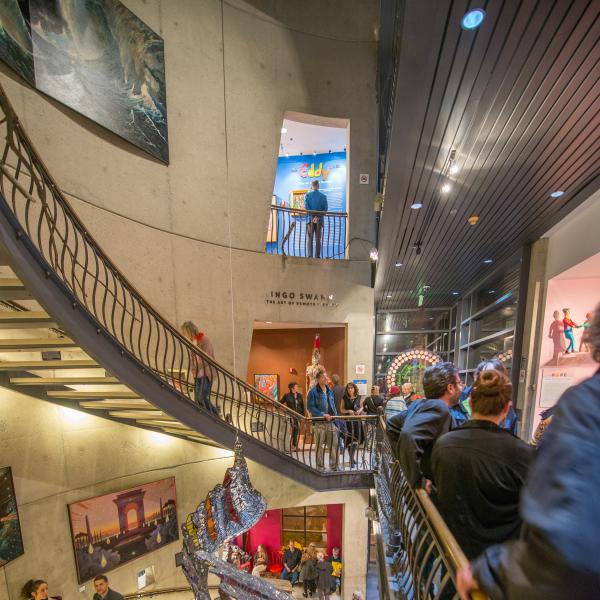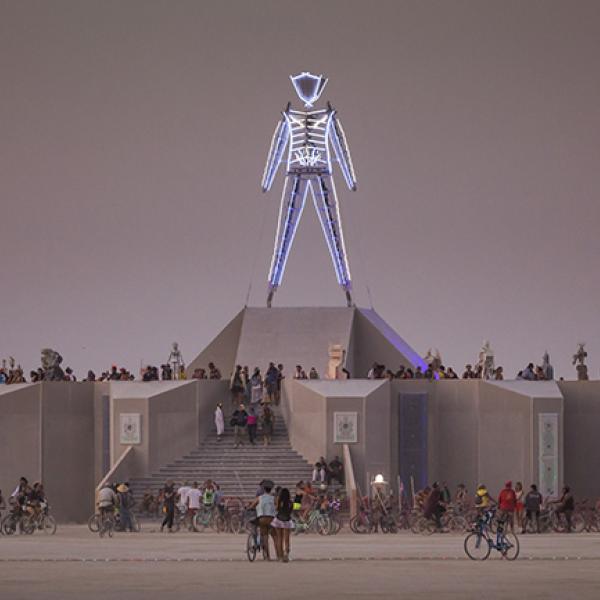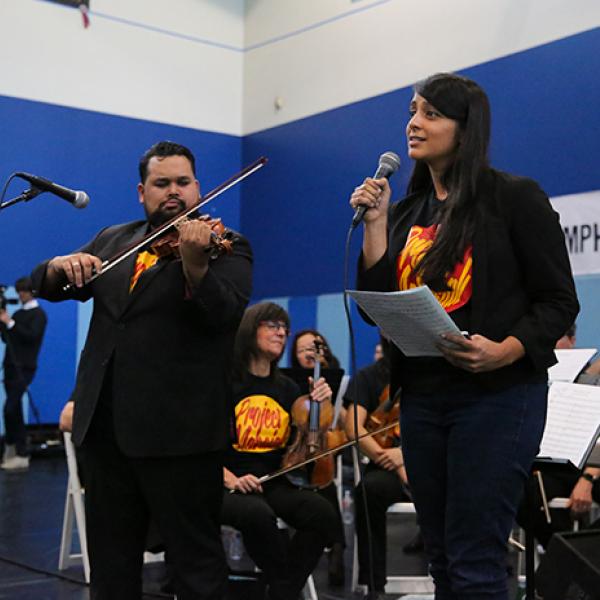Realism on the Reel
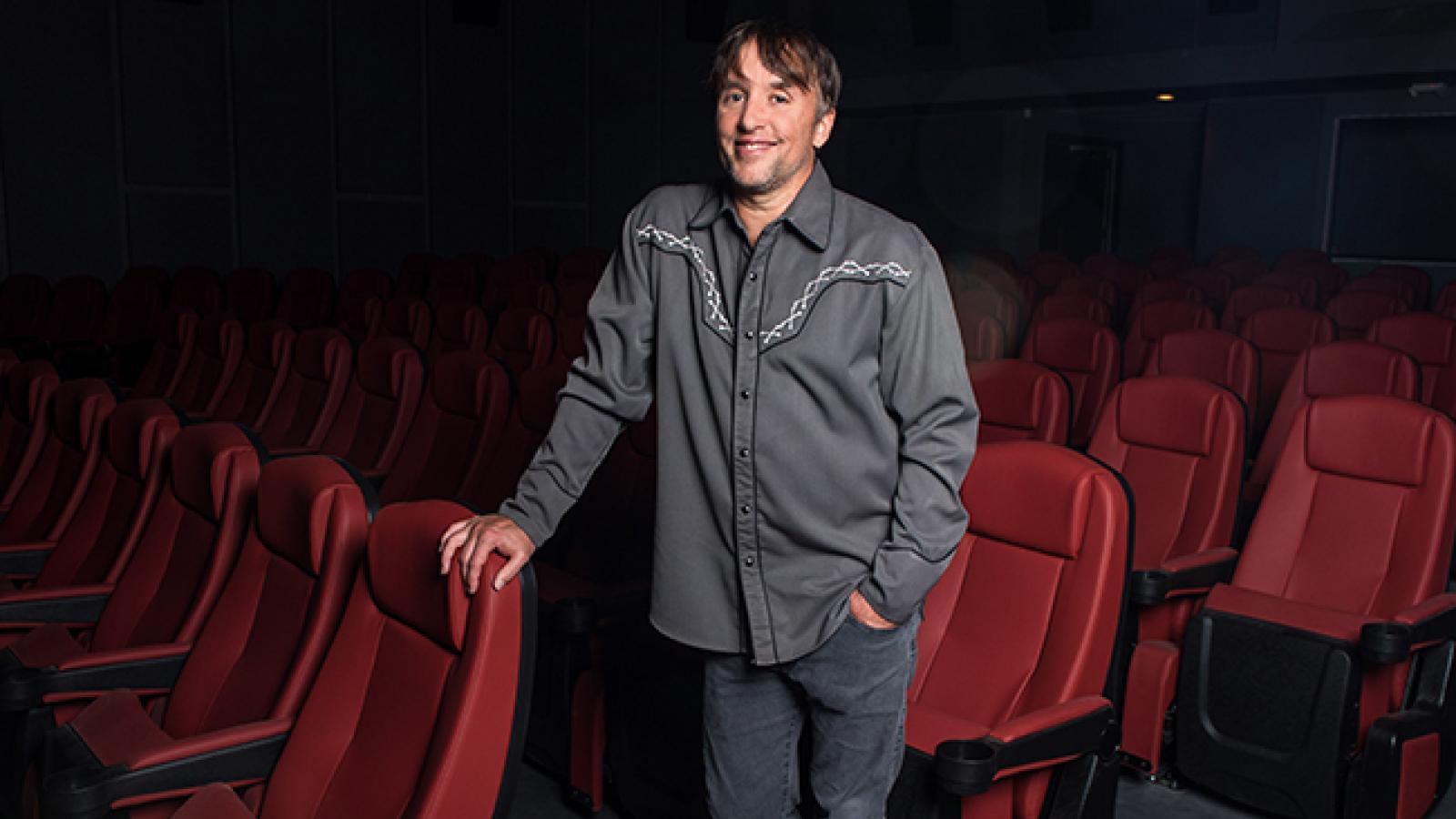
If a story seems like it cannot be turned into a film, Richard Linklater is the one to attempt to do just that. A coming-of-age film shot over the course of 12 years? Try Boyhood. A Philip K. Dick sci-fi novel adapted to surreal animation? A Scanner Darkly. A plotless, 90-minute conversation between a man and a woman? How about three—Before Sunrise, Before Sunset, and Before Midnight. Linklater is one of the few filmmakers with both a daring vision and the drive to execute it.
From his youth, Linklater was hardwired to make movies. Not only was he passionate about writing from an early age, but he also had a knack for working with technology. “I had a certain patience and a technical ability that I always trusted,” he said. “As a kid, I was always building things with my hands.”
Linklater combined these talents in his early 20s by making films on a shoestring budget. His breakout feature Slacker only cost $23,000, and was supported by the Southwest Alternate Media Project through a National Endowment for the Arts regional grant. To keep expenses low, he shot the film on location around his hometown in Austin, Texas, and used a cast of amateur actors. The modest film ended up becoming a cult classic and grossed $1.2 million at the box office. Slacker showed the possibilities behind low-budget film and inspired a number of independent filmmakers to pursue their own features, perhaps most notably, Kevin Smith’s Clerks, which draws from Slacker’s naturalist approach.
Since then, Linklater has gone on to become one of the most versatile directors working today. His expansive 21-film catalogue has earned him recognition from audiences and critics alike, not to mention Oscar nominations and numerous awards like Golden Globes for Best Director, Best Picture, and Best Original Screenplay. He’s directed nostalgic teen movies like Dazed and Confused, shot entire films that take place in a single room like Tape, and experimented with rotoscoping—an animation technique in which artists trace over the film frame by frame to create an eerie, lifelike image.
Linklater’s catalogue is certainly diverse, but he affirms that his goals as a filmmaker have stayed intact throughout his career. “The impulses are the same now as they were in my early 20s,” he said. “You’re trying to discover something. It’s just a process of discovery and articulation.”
For Linklater, discovery begins with finding a new way to tell a story. “I am never too satisfied with the status quo,” he said. Instead of adhering to the same old frameworks as past filmmakers, he values “trying to invent or break some ground—not for its own sake, but for the sake of a new kind of story you’re trying to tell.”
One way in which Linklater distinguishes himself from blockbuster filmmaking is his drive for realism. While a typical thriller or action film may strive to feel somewhat believable, the goal of those stories is ultimately to distance the audience from their everyday lives, or as Linklater puts it, to “take them on an adventure somewhere else.” Those films are creating an alternate world for the audience—one that gives up some realism for the sake of escapism.
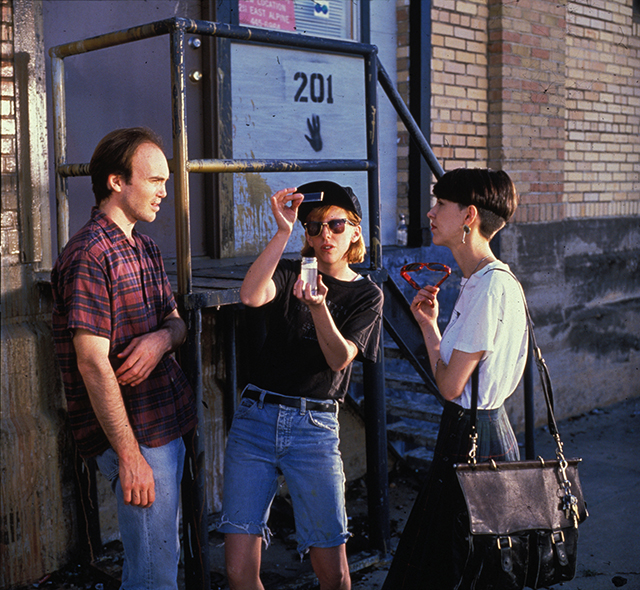
|
Linklater, however, takes the opposite approach. “[Realism] is my default position,” and it shows in the structure of his films. His movies shine a spotlight on the unremarkable, ordinary parts of everyday life, often throwing plot out the window to focus instead on the characters—their conversations, their relationships, the seemingly insignificant moments that end up shaping them the most. “I want it to feel like [the film is] really close to you, like ‘Oh, this is what life really might feel like if I was in this situation.’”
This naturalist vision, however, is not easy to execute. In making a film that reflects “real” life, countless factors can get in the way. “On each project, I’d like to feel that there’s something kind of insurmountable about it—some puzzle you have to solve or some element you have to crack or the whole thing doesn’t work.”
Sometimes this puzzle arises out of practical issues. Film is an art form, but it’s also an industry, meaning time and money are always a top priority. “This happens to me quite a bit—that the ambitions of the film and what you want for it so far outstrip your schedule and budget,” he said. “That is a recipe for frustration.” The puzzle then becomes how to work the story around the practical limitations of film.
This was much of Linklater’s concern when envisioning his film Boyhood. “Just the idea of Boyhood was me solving a problem, the problem being I want to depict a kid growing up. Most childhood movies are about one little section of their lives, because you can’t ask a seven-year-old, ‘Oh, now you’re 14. Act like you’re 14.’”
He hit a roadblock. His vision for an authentic coming-of-age story seemed at odds with the possibilities of film. But then, he had an idea—one that was outrageous, but feasible. “Why can’t you just film a little bit every year? It will be this longitudinal project. I can film a little bit, and then at the end of the 12 years I’ll have my one film. It will tell the story I want to tell from all of these people, the parents and children, over 12 years. And it will solve my problem technically.”
This ambitious vision ultimately paid off. Boyhood was released in 2014 to widespread acclaim and received six Oscar nominations and one win for actress Patricia Arquette, in part because of the film’s daring concept and impressive execution.
Even when he finds a way to make a story work on a practical level, Linklater still runs into problems in crafting the idea into a compelling narrative; there’s no use in collecting all the footage if the ideas don’t line up in the end.
This is precisely what Linklater had to overcome when shooting his upcoming film Where’d You Go Bernadette?, set to be released this spring. Based on Maria Semple’s book of the same name, the film focuses on an agoraphobic architect and mother named Bernadette Fox, who goes missing prior to a family trip to Antarctica.
“We’re in the Arctic. We’re shooting in water. We’re traveling around,” he explained. “The film’s got a pretty large scope and yet, it’s this intimate family drama. The bigger challenge was how to tell a portrait of a complicated woman, an artist who has stopped creating.”
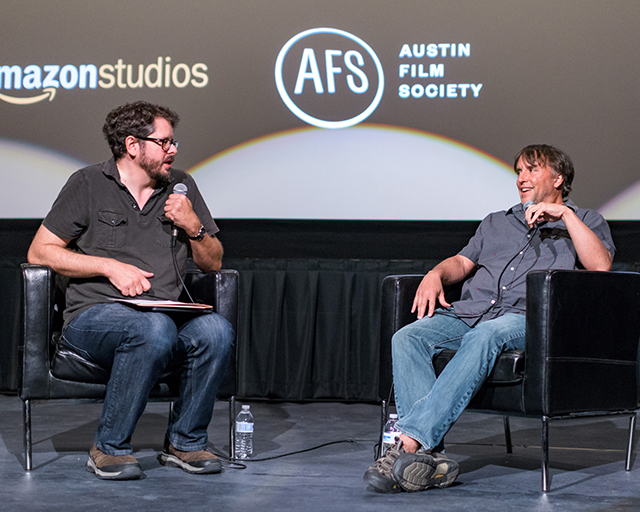
|
While the source material tells the story mainly through a series of documents like emails and voicemails, Linklater began to question if this epistolary format would translate to film. He ultimately decided that, “a literal adaptation is not an option.”
To understand how he was going to make the story work, Linklater had to start from the basics. This meant he had to find what was at the core of the novel, asking himself, “What about this book do you want to express in the film? What’s compelling about this? And what will work as a film?” Thanks to help from a team of co-writers, Linklater was ultimately able to craft a screenplay that, he hopes, retains the core themes of the novel using the structure of a film.
Although Linklater modestly claimed, “I’ve had some good ideas over the years that I’ve been lucky enough to articulate and play with,” it’s not enough for him to simply tell his own stories.
Even before he gained his own footing as an independent filmmaker, Linklater founded the Austin Film Society (AFS), a nonprofit dedicated to supporting independent film in Texas. “Something that I think is so important is the film culture—that film is treated like the artistic medium that it is.” The AFS became his way to support the local community of filmmakers that gave him his foundation.
When the society was first getting off the ground in 1985, this meant screening independent and experimental films that could not find widespread distribution. Since then, with support from the National Endowment for the Arts, the society has expanded its resources considerably, constantly finding new ways to make film accessible. It now funds Texan filmmakers through its AFS Grants program, educates students through the afterschool program AFS Film Club, and trains filmmakers in the organization’s 20-acre production facility Austin Studios.
Part of why Linklater puts so much effort into these programs is because he empathizes with the plight of independent filmmakers. “Aspiring filmmakers can use all the help they can get,” Linklater said. “People see a little film and go, ‘Oh, you know, that was easy.’ No—that’s the hardest kind because you’re the ringmaster. You’re having to coerce everyone, charm everyone, outwork everyone, somehow instill belief in people.”
The Austin Film Society therefore serves as a way to keep Linklater connected to his roots and support a new generation of filmmakers. “I feel I can be more proud of that than I can of my own work in some ways,” he said.
Whether Linklater is experimenting with a new cinematic technique or creating a new resource for aspiring filmmakers, he is constantly seeking a new way to tell stories in film. He’s not just bringing stories to film; he’s changing the story of film itself.
Teddy Wansink was an intern in the NEA Office of Public Affairs in summer 2018.




